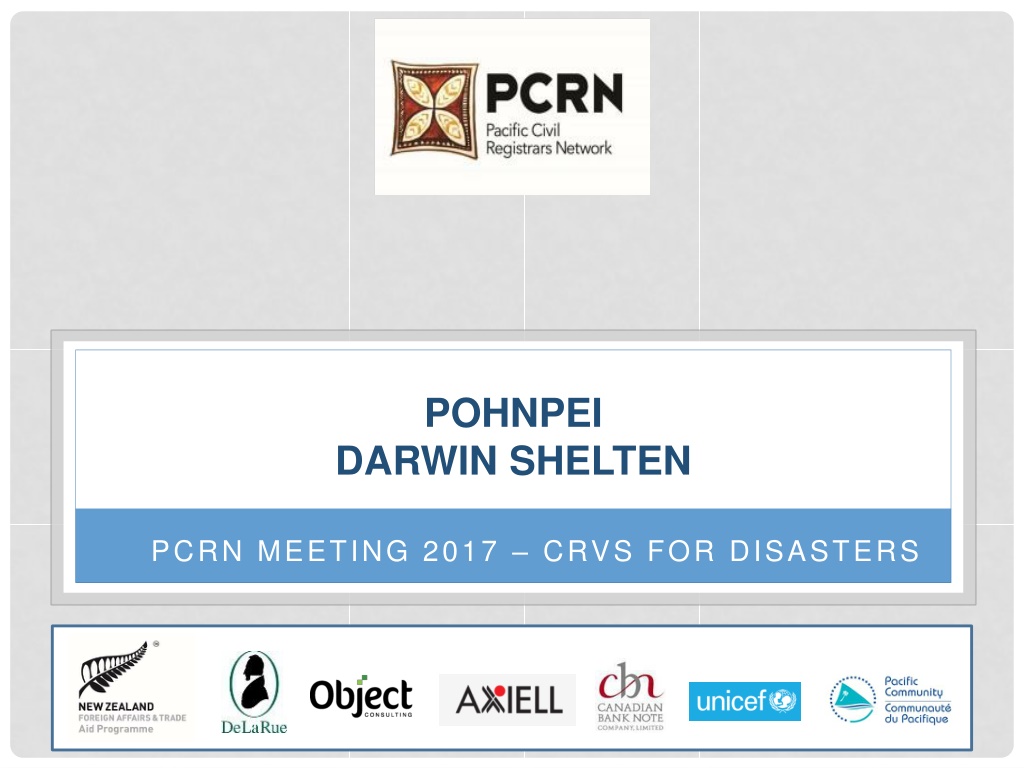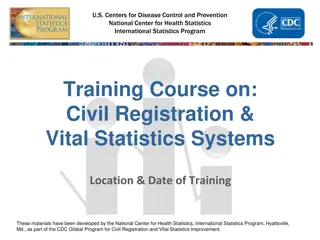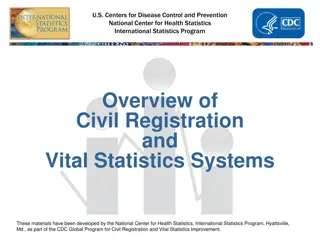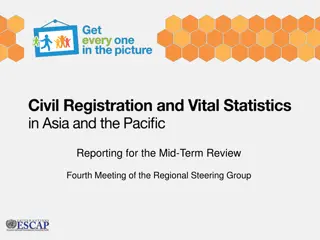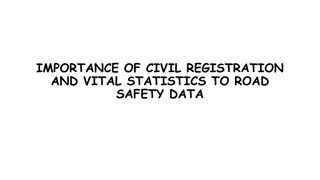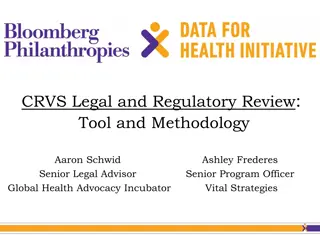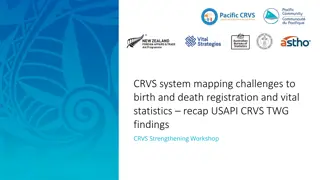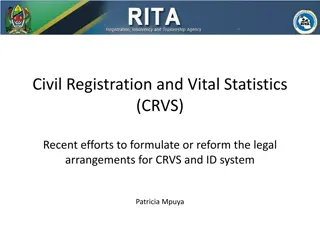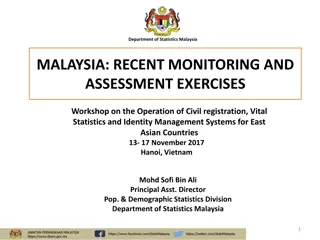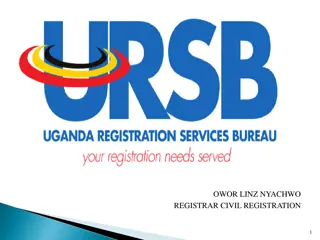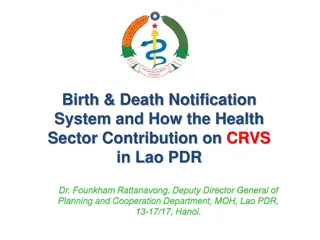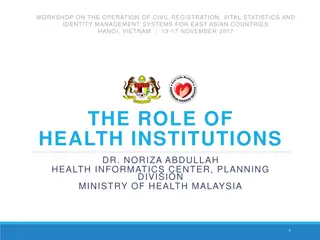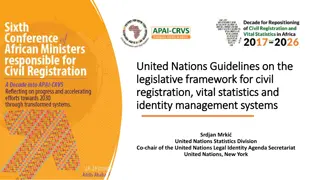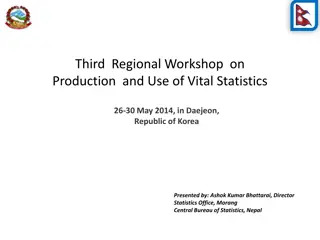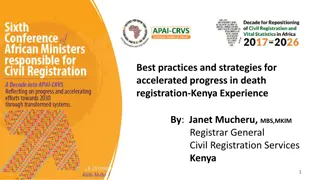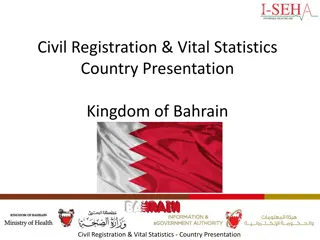Challenges and Solutions for Civil Registration and Vital Statistics Systems in Pohnpei
Birth and death registrations in Pohnpei face challenges before and after disasters, including unregistered deaths and incomplete data storage. Solutions involve public awareness campaigns, improved registration processes, and better data protection strategies to ensure accurate vital statistics management.
Download Presentation

Please find below an Image/Link to download the presentation.
The content on the website is provided AS IS for your information and personal use only. It may not be sold, licensed, or shared on other websites without obtaining consent from the author. Download presentation by click this link. If you encounter any issues during the download, it is possible that the publisher has removed the file from their server.
E N D
Presentation Transcript
POHNPEI DARWIN SHELTEN PCRN MEETING 2017 CRVS FOR DISASTERS https://encrypted-tbn1.gstatic.com/images?q=tbn:ANd9GcTqyULz4iedKjR5uCCa6tfQkd80Tmt24kvK_0Lr6I-GFdsKi-KNYKACpQ Image result for spc Object Consulting Software development for large-scale business applications, Sydney, Melbourne Australia
OVERVIEW 85-90% of birth registrations are completed within 1 year of birth. 85% of the total population is estimated to have had their births registered. Birth certificates are not provided for all births. 75%-80% of death registrations are completed within 1 year of death. Cause of death (from a medical certificate) is provided for 90% of all deaths.
DATA STORAGE AND PROTECTION Original birth and death certificates are stored in the records office at the Pohnpei State Hospital. The Court stores official registered copies of birth and death certificates, and original marriage certificates. The court has electronic copies of birth certificates up to 2009, but does not have copies of death or marriage certificates. Data are stored as paper records and about 60%-70% are stored electronically. Over 50% of CR data are backed up but not fully protected. There is no off-site copy data or duplicate of the hard drive or the Court s paper records. Backup was done once back in 2009.
MAJOR CHALLENGES FOR CRVS (PRE AND POST DISASTER) Deaths occurring outside the hospital are often unregistered. o Registration depends on the family providing information to the Pohnpei State Hospital records office, resulting in late registration or no registration at all. o Tracking deaths following a disaster will be more troublesome and access to the records office will be even harder, so creating local records offices or data collection points will be necessary. o A public awareness campaign is needed to ensure that the public knows how to register deaths occurring both within and outside of Pohnpei. Registration of elders born before the creation of the records office is not precisely done. The Pohnpei State Hospital records office relies on information provided by the families and younger generations provide inadequate and sometimes incorrect information for the registration of elders or deceased relatives. Updates and adequate registration is required because it will become more difficult to complete registration during or following a disaster. Families are encouraged to report to the records office to prepare birth certificates for those who were born before opening of registration. o o o
DISASTER SCALE UP First of all, all our CR data are not fully backed up or duplicated and once the data is lost or damaged it is gone. We are faced with daily challenges, and it would be difficult to provide registration following a disaster. We have been dealing with missing data and delayed registration, which are both complicated issues. One of the challenges that causes delayed registration of both birth and death certificates is lack of access to the Pohnpei State Hospital records office. This will become worse after a disaster. We store all CR data as paper records in set of binders arranged on shelves, with limited electronic copies, and wetness can easily destroy our records. Our office will have difficulty coping with registration after a disaster.
